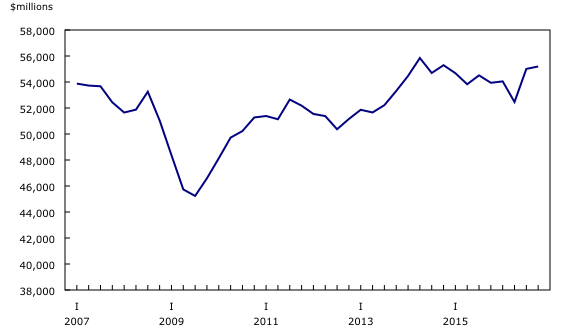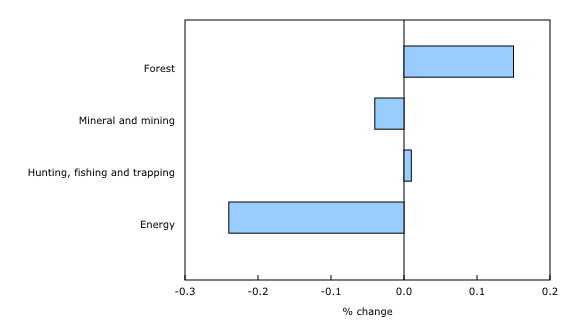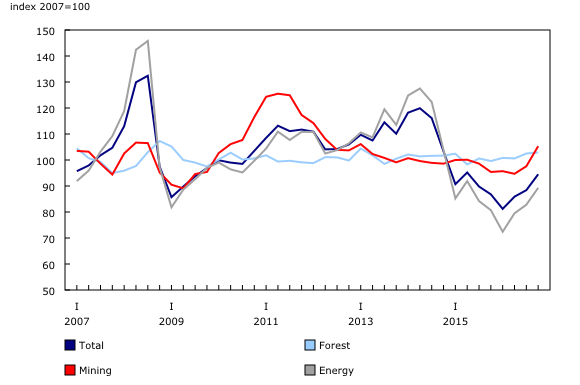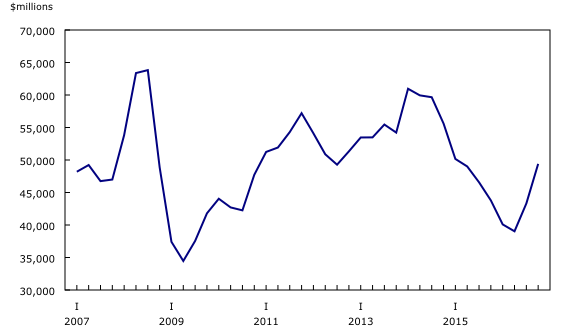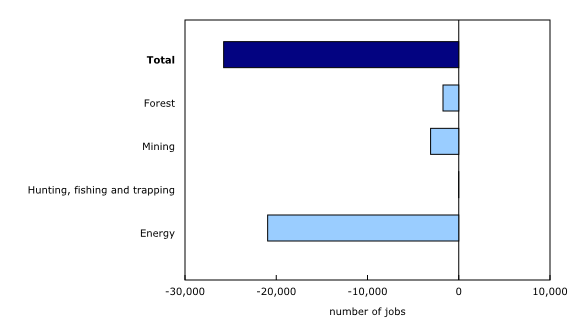Natural resource indicators, first quarter 2007 to fourth quarter 2016
Archived Content
Information identified as archived is provided for reference, research or recordkeeping purposes. It is not subject to the Government of Canada Web Standards and has not been altered or updated since it was archived. Please "contact us" to request a format other than those available.
Released: 2017-04-21
Real natural resource gross domestic product (GDP), or the volume of economic activity attributable to natural resources, edged up 0.3% in the fourth quarter of 2016, after a gradual downward trend over the previous two years. In contrast, real GDP for the economy as a whole increased by 0.6% in the fourth quarter of 2016.
Natural resource activity comprised 11.3% of GDP for the Canadian economy and amounted to $209 billion annualized (nominal terms) in the fourth quarter of 2016. This ratio remains below its recent peak of 15.1% in the second quarter of 2014.
The energy sub-sector accounts for approximately two-thirds of the Canadian natural resource sector, while the mining sub-sector makes up for just over 20%. The forest (8%) and hunting, fishing and trapping (4%) sub-sectors account for the remainder.
Annual declines in real economic activity in 2016 diverged notably among natural resource sub-sectors. The forest sub-sector contributed positively to real GDP growth in 2016, while declines in energy pulled down growth. Both mining, and hunting, fishing and trapping, were relatively flat for the year.
Natural resource prices continue to rise
Natural resource prices rose 6.9% in the fourth quarter of 2016 and were 8.8% higher than in the same quarter of the previous year. The GDP implicit price for coal increased 99%, while export prices rose 121% on the strength of metallurgical coal.
Natural resource prices remain 21.2% lower than in the second quarter of 2014, when oil and some mineral prices began to fall. Energy prices are nearly 30% lower than their recent peak in the second quarter of 2014. Crude oil prices fell 40.4% over the same period.
Export values rebound
The nominal value of natural resource exports rose 14.1% in the fourth quarter of 2016, on top of an 11% gain in the third quarter. This follows nine consecutive quarterly declines since the second quarter of 2014. Export increases were led by coal and crude oil in the fourth quarter. The value of coal exports increased from $1 billion in the third quarter to $2.2 billion in the fourth. Exports of crude oil increased 28% to $15.4 billion, but remained 39% lower than their 2014 peak.
Employment in the natural resource sector fell in the fourth quarter
Employment in the natural resource sector decreased 0.2% (1,150 jobs) in the fourth quarter of 2016. For the year 2016, the majority of job losses were concentrated in the energy sub-sector.
Downstream activity adds to GDP
Secondary and tertiary processing for the forest and mineral and mining sub-sectors are identified in the natural resource indicators for analytical purposes. This includes such items as iron pipes, copper and aluminum tubing, cutlery and wood cabinets. These are shown separately from core natural resource activity, in accordance with international standards.
Including the secondary and tertiary downstream activity, and excluding water and aquatic and non-timber natural biological resources, natural resource activities totaled $230 billion (annualized nominal terms), or 12.5% of Canadian GDP in the fourth quarter of 2016.
Note to readers
The natural resource indicators (NRI) from the first quarter of 2007 to the fourth quarter of 2016 are now available along with updated Natural Resource Satellite Account (NRSA) estimates for 2007 to 2015. The NRI provide quarterly indicators for the main aggregates in the NRSA, namely, nominal and real gross domestic product, output, exports, imports and employment. The estimates from this account are directly comparable to the estimates found in the Canadian System of Macroeconomic Accounts.
Products
Additional information can be found in the article, "The Natural Resources Satellite Account: Feasibility study", part of the Income and Expenditure Accounts Technical Series (Catalogue number 13-604-M). A Sources and Methods document will be released in the summer of 2017 through the same technical series.
The System of Macroeconomic Accounts module features an up-to-date portrait of national and provincial economies and their structure.
The Methodological Guide: Canadian System of Macroeconomic Accounts (13-607-X) is available.
The User Guide: Canadian System of Macroeconomic Accounts (13-606-G) is also available. This publication will be updated to maintain its relevance.
Contact information
For more information, or to enquire about the concepts, methods or data quality of this release, contact us (toll-free 1-800-263-1136; 514-283-8300; STATCAN.infostats-infostats.STATCAN@canada.ca) or Media Relations (613-951-4636; STATCAN.mediahotline-ligneinfomedias.STATCAN@canada.ca).
- Date modified:


